Brown Butter Madeleines; dainty little cakes made in a traditional French way to ensure fluffiness, butteriness, and that distinctive shell shape.
Breakfasts in our house almost exclusively revolve around tiny cakes.
While I will endlessly enjoy a deep bowl of steaming porridge, or crunching through piles of cereal, wee baked things are a growing obsession.
Mornings used to involve a 15-20 minute commute to my workplace. A minor but strenuous uphill walk that required mental and physical energy to tackle before a 9+ hour workday. However, as the past year has shortened said commute to walking three steps into another room in our flat, the subsequent requirement for large portions complex carbohydrates has somewhat diminished.
Rather than filling myself to the brim and trudging through the many long hour until lunch time, mornings are now much more joyful when filled with petite treats. Self care in the form of a sweet, buttery mouthful or two with the day’s first mug of coffee.
Have you seen our festive Sparkling Spiced Orange Madeleines?
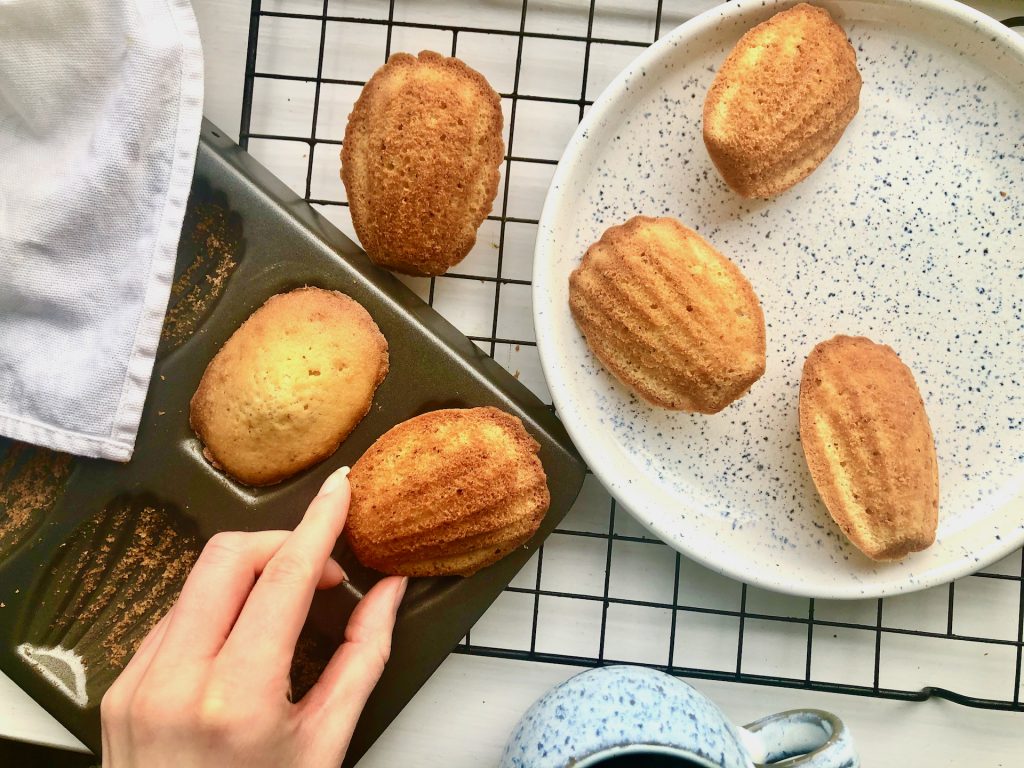
Alongside this evolution of breakfasting habits has come the endeavour into new baking techniques. Waxing and waning lockdown restrictions have plunged me into a project of actually learning the classic French patisserie techniques I’ve been vowing to learn for years. With the help of Le Cordon Bleu’s Pastry book and the smudged camera of my iPhone 8, I’ve been filming a series in which I teach myself to become a pastry chef.
So far in the series we’ve tackled the fiddly world of chocolate, and the dangers of confectionery. Next comes the challenge of dainty bakes such as madeleines, financiers, and muffins. The Brown Butter Madeleines you see before you are a twist on the prescribed recipe for madeleines in the book. They have obviously been tweaked to suit Maverick Baking readers’ palates (love you guys) and to add a more remarkable flavour to them. Today’s twisted recipe for Brown Butter Madeleines swaps out one of the eggs just for the yolk, for extra golden colour. It uses salted butter, something I rely on on a daily basis to ensure baked goods are actually well-seasoned. Yes lads, season your desserts too.
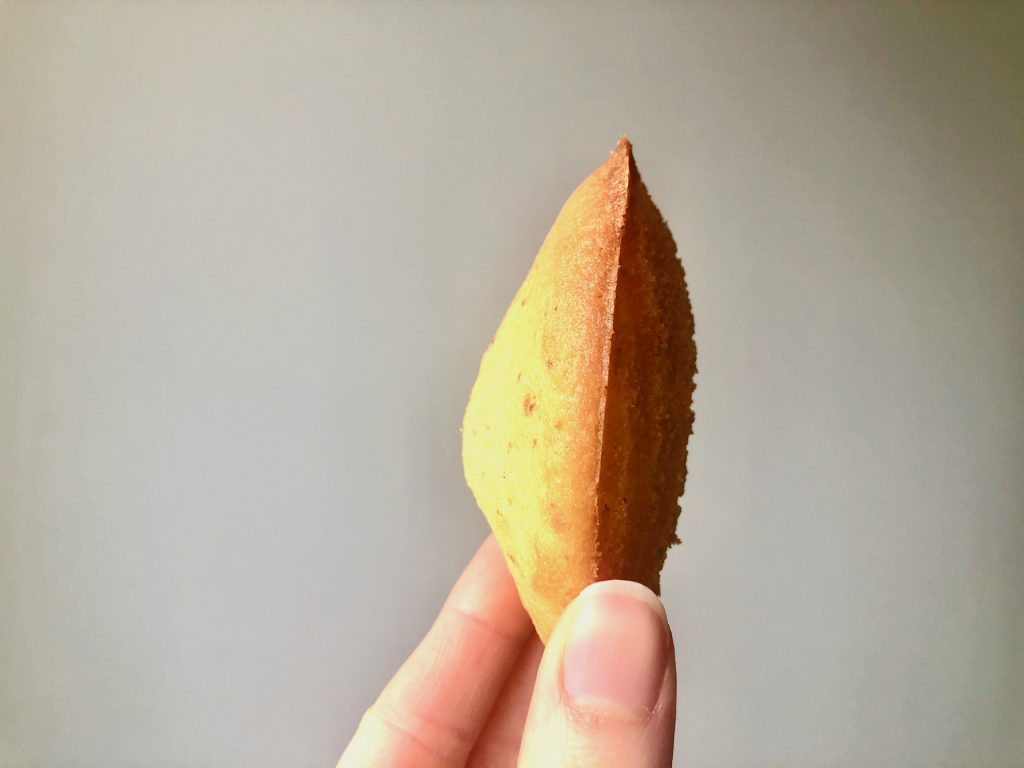
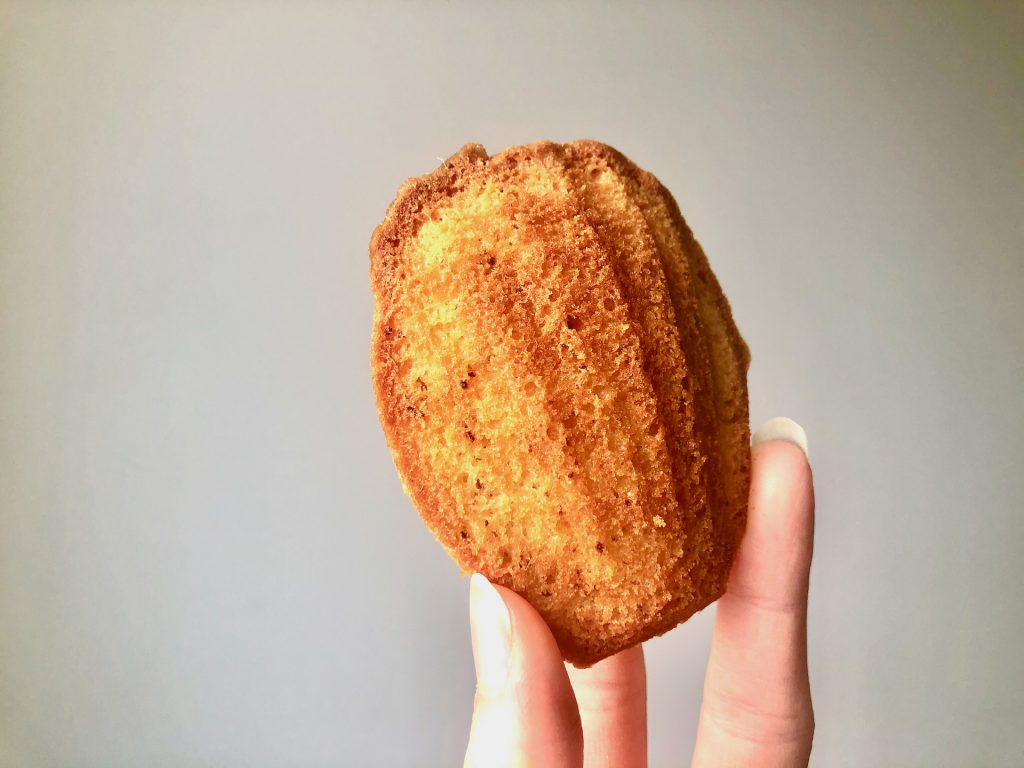
The recipe also makes use of internet-famous brown butter, or burnt butter. This has long been a favourite technique of chefs, in sweet or savoury cooking, to add flavour to the butter itself and to anything it touches. All you need to do is pop your butter into a pan, ideally a silver one so you get a better view of the colour, and gently melt and simmer it until it turns chestnut brown. You can then use the butter immediately, such as in today’s recipe, or you can set it and save it for extra-delicious uses in everyday cooking and baking.
Mostly, this recipe for Brown Butter Madeleines just involves the measuring of some ingredients you probably already have in your kitchen. It’s incredible what normal every day things can become with a bit of care. The only real essential piece of kit you’ll need to make the recipe is a madeleine tin. This is a metal or silicone tray with shallow shell-shaped hollows, allowing you to get that iconic madeleine shape. (This is the one I use). While you may not use this kind of equipment every day, it’s nicely affordable and is the perfect gateway to elegant teatime treats.
If you’ve never tried baking or eating madeleines before, I hope this recipe will give you the best of both experiences. Biting into the just-crisp golden exterior of these little beauties while still warm is magnificent. The beautifully fluffy interior shows off all the flecks of brown butter and carries a gorgeously yellow crumb. A couple of these Brown Butter Madeleines with a tea or coffee on a cold day is pretty hard to beat. Like a tiny taste of Paris while you can’t actually travel to Paris, eh?
Want to save these Brown Butter Madeleines for later? You can pin the image below.
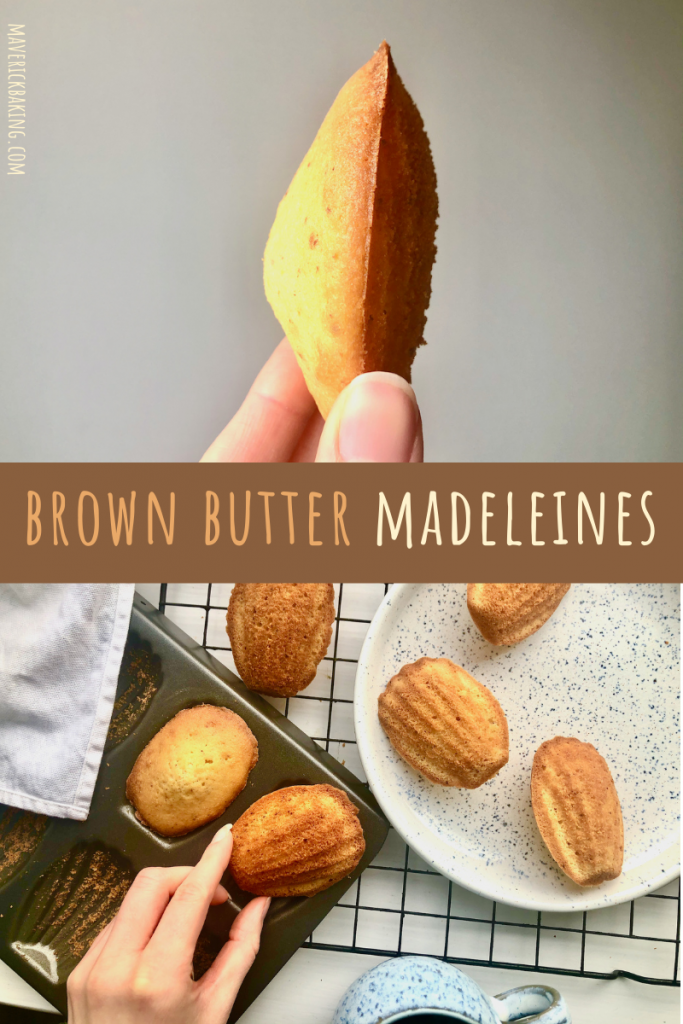
To make these Brown Butter Madeleines, simply follow the recipe below!
Ingredients
- 100g (6 ½ tbsp) salted butter (plus extra to grease the tin)
- 1 large egg
- 1 egg yolk
- 60g (scant ⅓ cup) caster sugar
- 1 tbsp honey
- 1 tsp vanilla extract
- 100g (rounded ½ cup) plain flour
- 2 tbsp milk or buttermilk
- 1 tsp baking powder
Instructions
- Grease your madeleine tin with a generous amount of butter, this will help prevent the madeleines from sticking to the tin.
- In a small saucepan or frying pan, melt your butter over a medium heat.
- Allow it to continue heating and bubbling until the butter begins to change colour. You’re looking for a nice toasted brown colour and a deliciously nutty smell. Once browned, remove the pan from the heat and allow the butter to cool slightly while you prepare the rest of your madeleine mixture.
- In a large bowl, whisk together your egg, egg yolk, sugar, honey and vanilla for 2-3 minutes or well-combined and until slightly airy. An electric whisk would be ideal, but a regular whisk will work too.
- Pour in your flour, milk, baking powder, and your melted browned butter and gently whisk until everything is just combined into a thick mixture.
- Cover the bowl with a tea towel or some clingfilm and chill in the fridge for 30 minutes. (You can chill it overnight for even better results!)
- Meanwhile, preheat your oven – 220 C / 200 C fan / 400 F / gas mark 6.
- Once chilled, spoon the chilled madeleine mixture evenly between the cavities of your tin, no need to spread or flatten it down, big dollops will do! The mixture should comfortably make 12 brown butter madeleines.
- Place the madeleine tin into the oven, immediately turning the heat down – 180 C / 160 C fan / 350 F / gas mark 4 – and baking for 10-14 minutes. The madeleines should be golden brown and generously risen, with a distinctive nipple-like peak in the centre.
- Remove the madeleine tin from the oven, immediately and carefully removing the madeleines from the moulds onto a wire rack to cool completely.
- Enjoy!
BE A MAVERICK: why not swap out half of the milk for your favourite liquor? Amaretto or Frangelico would be delicious in this recipe!
These Brown Butter Madeleines will keep well in an airtight container on a covered cake stand for up to 2 days, but are best eaten as fresh as possible.
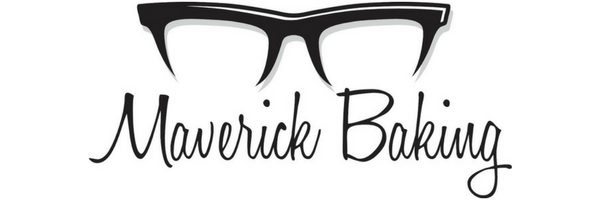
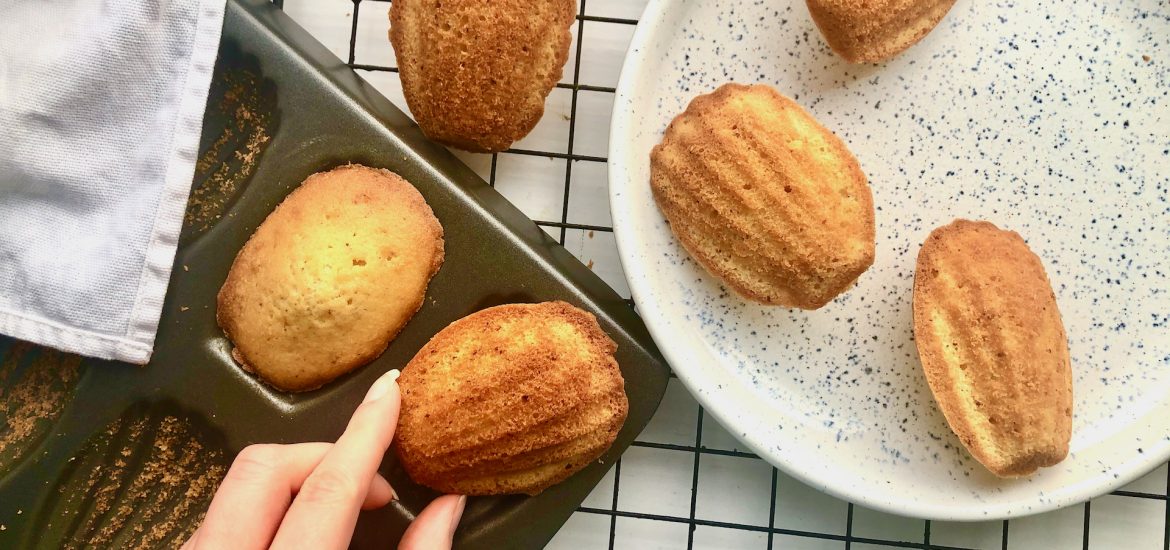

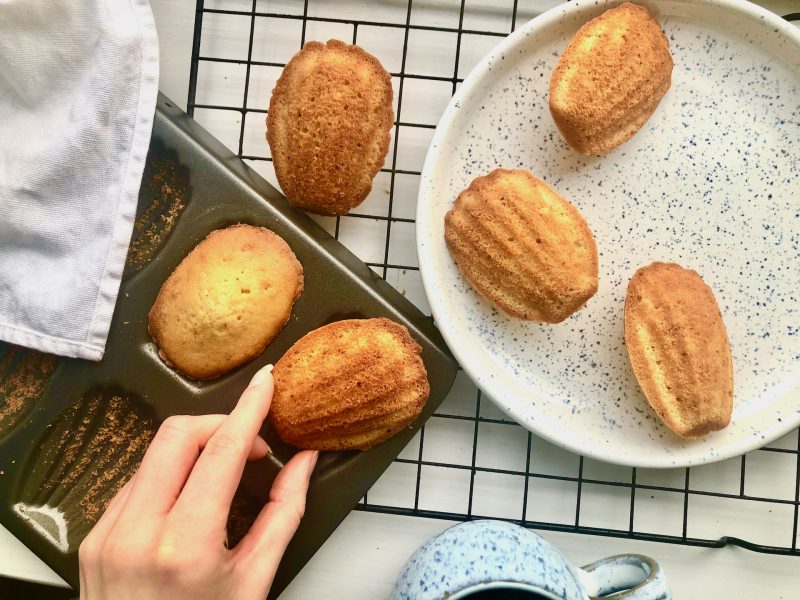

Did you know Madeline’s originated in Poland?
Oh really? I didn’t know that!